Posted on June 9th, 2011 by axb
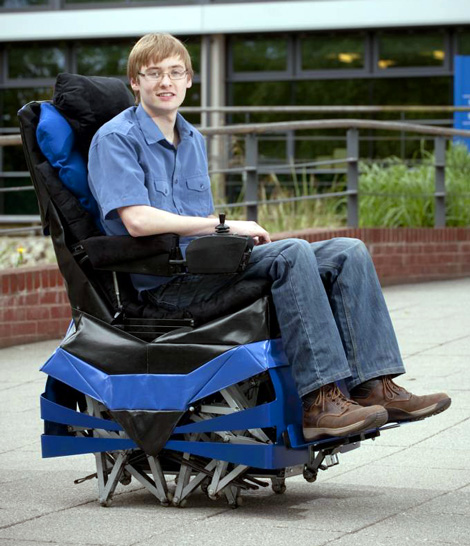
A product-design student in Derby, England, has invented a wheelchair alternative he hopes will give people with mobility issues more freedom, the BBC reported. Martin Harris, 21, noted that current wheelchairs are often restricted to paths. His battery-powered device “can work either indoors or outdoors – a leg can simply pick itself up and step over an obstacle.”
The chair, which can be steered by a joystick in the armrest, has six pairs of legs underneath the seat that consist of 216 pieces bolted together. Two conventional wheelchair motors power the “walking” chair, which can travel at up to 4 mph – the maximum allowed for battery-powered wheelchairs.
Read More
Filed under: e-News, Mechanical, Transportation | 1 Comment »
Tags: Giving Back, Mechanical, Technology, Transportation
Posted on April 28th, 2011 by axb
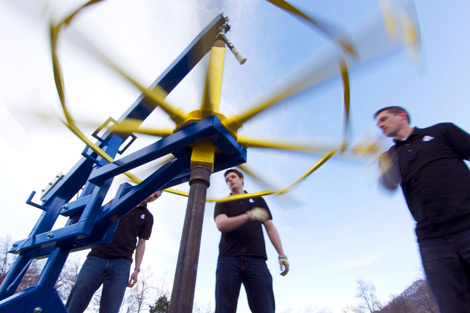
Seven engineering students designed a water drill that might improve the lives of millions.
Lack of sanitary drinking water is a serious and well-known problem that continues to plague many third-world nations. In Tanzania alone, over 800,000 people do not have access to clean water.
A group of seven engineering students from Brigham Young University hope to alleviate this problem by giving Tanzanians an efficient and inexpensive way to obtain drinking water. For their senior capstone project, they have designed a human-powered drill that can dig a freshwater well much faster than many more expensive devices.
Read More
Filed under: e-News, Environmental, Mechanical | 5 Comments »
Tags: Environmental, Giving Back, Mechanical
Posted on March 17th, 2011 by axb
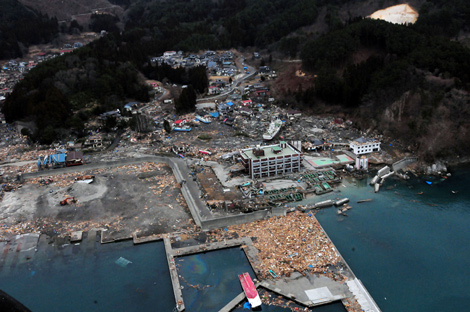
An aerial view of damage to Wakuya, Japan, after March 11 earthquake and tsunami
Last Friday, Japan was hit with a devastating earthquake of 9.0 magnitude. In combination with the following tsunami, the earthquake caused immense damage to northeastern regions of Japan and severely compromised six nuclear power-plant reactors. Recent reports estimate the death toll at over 5,000, with another 9,000 people missing and 2,500 injured. Over 4 million households were left without electricity, and 1.5 million without running water.
Since the tragedy stuck, scientists and engineers have been working around the clock to find and help survivors, as well as to avert potential nuclear meltdowns.
Read More
Filed under: Computer, e-News, Electrical, Environmental, Nuclear | 3 Comments »
Tags: Computer, Electrical, Environmental, Giving Back, Nuclear, Robotics
Posted on December 21st, 2010 by axb
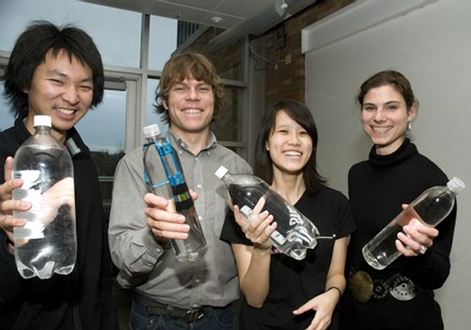
Chin Jung Cheng, Charlie Matlack, Penny Huang, and Jaqueline Linnes have designed a way to know when solar disinfected water is safe to drink
In many parts of the world, finding clean drinking water can be very difficult. Close to 1 billion people do not have access to safe water, a problem which, in addition to lack of basic sanitation, is responsible for 80% of all diseases and close to 5,000 children’s deaths every day.
To help combat this serious issue, many aid organizations advocate solar water disinfection (also known as SODIS), or the practice of leaving plastic water bottles out in the sun to kill off harmful bacteria. The only problem with SODIS is that for now its adopters must estimate the length of time a water bottle must soak up rays before it has been fully sanitized.
Read More
Filed under: e-News, Environmental | 2 Comments »
Tags: Biomedical, Environmental, Giving Back, Solar
Posted on August 26th, 2010 by axb
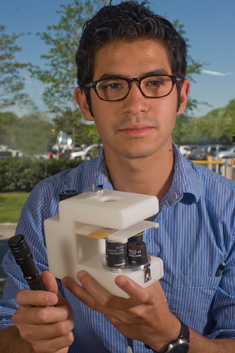 Traditional fluorescence microscopes (the ones you might find at your local hospital or in a medical lab) typically cost up to $40,000 and can take up more space than several desktop computers. That’s a problem for doctors hoping to advance medical care in underdeveloped countries.
Traditional fluorescence microscopes (the ones you might find at your local hospital or in a medical lab) typically cost up to $40,000 and can take up more space than several desktop computers. That’s a problem for doctors hoping to advance medical care in underdeveloped countries.
Cost and space were two issues that recent Rice University grad Andrew Miller sought to address when he invented a portable, battery-powered fluorescence microscope that costs only $240 to make. The novel device is encased in durable plastic that Miller molded with the help of a 3D printer. It’s lighted and powered by a small LED flashlight.
Read More
Filed under: Biomedical, e-News | 1 Comment »
Tags: Biomedical, Giving Back













 Traditional
Traditional